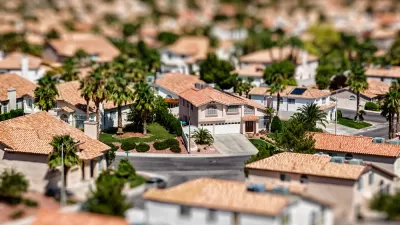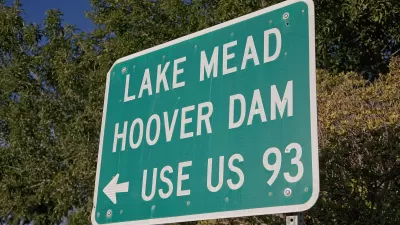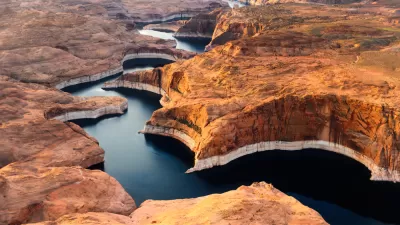If the desert metropolis wants to survive, it will need a strategy built on something other than a denser, more urban downtown.

In an article on the heady topic of whether or not the city of Phoenix is “doomed,” Aaron Betsky begins with a quote from the 2015 dystopian novel The Water Knife:
"In her own mind she imagined Phoenix as a sinkhole, sucking everything down – buildings, lives, streets, history – all of it tipping and spilling into the gaping maw of disaster –sand, slumped saguaros, subdivisions, all of it going down."
Betsky, however, does not believe that this post-apocalyptic landscape is inevitable, nor does he believe that Phoenix is always accurately imagined by writers of either fiction or non-fiction—usually as a water hungry expanse of suburban sprawl, and more recently as one threatened by climate change.
“[T]he metropolitan area actually holds up quite well by most measures of sustainability. It is denser, believe it or not, than cities such as Seattle, Washington DC, Houston, Detroit, and Atlanta, and has a lower per person carbon footprint than sixteen of the largest Standard Metropolitan Areas, including New York and Chicago (although it does use more water, and at cheaper rates, than all of them).”
Water supply is, and has always been, a question in Phoenix, and during the recent drought there were numerous predictions that the entire state of Arizona would run out of water in as little as six years.
There have also been greater questions about whether Phoenix should, or would exist at all; its present size is only possible due to serious hydrological engineering (and air conditioning).
Betsky suggests that part of the problem is that Phoenix can’t be planned by the same set of principles as older cities that spread out of from a high-rise downtown.
“The Valley is instead a carpet of nodes, some large enough to be Edge Cities per American author Joel Garreau's definition, but many smaller than that: retro downtowns such as Scottsdale's New Urbanist shopping, residential, and resort areas such as the Kierland Resort, Kierland Commons and Scottsdale Quarter, and endless confluences of hospitals and shopping malls, sporting venues and hotels, and resorts, shopping, and residential agglomerations.”
Instead of greater density, Phoenix should pursue sustainability in its current form, by focusing on these nodes and figuring out three things: “how to make them more sustainable and varied in themselves; how to connect them in a manner that wastes less time and energy; and how to make that landscape of networks and nodes more appropriate to the Sonoran Desert.”
“There is a lot the city can still do to improve its future,” Betsky writes. “One fundamental thing the Valley – or we – can do, however, is to stop thinking about it as a traditional city.”
FULL STORY: "Is Phoenix doomed to fall back into the ashes?"

Maui's Vacation Rental Debate Turns Ugly
Verbal attacks, misinformation campaigns and fistfights plague a high-stakes debate to convert thousands of vacation rentals into long-term housing.

Planetizen Federal Action Tracker
A weekly monitor of how Trump’s orders and actions are impacting planners and planning in America.

In Urban Planning, AI Prompting Could be the New Design Thinking
Creativity has long been key to great urban design. What if we see AI as our new creative partner?

Cal Fire Chatbot Fails to Answer Basic Questions
An AI chatbot designed to provide information about wildfires can’t answer questions about evacuation orders, among other problems.

What Happens if Trump Kills Section 8?
The Trump admin aims to slash federal rental aid by nearly half and shift distribution to states. Experts warn this could spike homelessness and destabilize communities nationwide.

Sean Duffy Targets Rainbow Crosswalks in Road Safety Efforts
Despite evidence that colorful crosswalks actually improve intersection safety — and the lack of almost any crosswalks at all on the nation’s most dangerous arterial roads — U.S. Transportation Secretary Duffy is calling on states to remove them.
Urban Design for Planners 1: Software Tools
This six-course series explores essential urban design concepts using open source software and equips planners with the tools they need to participate fully in the urban design process.
Planning for Universal Design
Learn the tools for implementing Universal Design in planning regulations.
Appalachian Highlands Housing Partners
Gallatin County Department of Planning & Community Development
Heyer Gruel & Associates PA
Mpact (founded as Rail~Volution)
City of Camden Redevelopment Agency
City of Astoria
City of Portland
City of Laramie





























